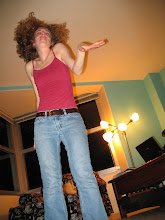There are a lot of reasons why the Met’s initiative is so good, not the least is its hook—the playful, double entendre in the title. New York has a crowded museum field with scores of institutions vying for the limited time and attention of the museum-going public. Couple this with New Yorkers’ perception that the City’s most popular museums are tourist traps and you can begin to understand why (incredibly, unbelievably) many New Yorkers have never visited the Met. “It’s Time We Met” addresses that problem head on. But the title also reaches out to another under-represented museum-going demographic—Generation Y. By turning the museum’s nickname into a verb, the Museum, which has a popular reputation of being elite and stodgy, has adopted a popular linguistic convention rife in 20-somethings speech—I googled it; I’ll blog about it; etc.
The campaign is pitch-perfectly geared towards Gen Y and their sense of fun. Gen Y likes to actively participate and share their experiences with their friends. The Met asks people to upload their contest submissions to Flickr, a photo-sharing website. Instead of saying, “email us your photo submissions,” the Museum is encouraging the fun to continue after a trip. As you upload, you can see what everyone else’s visit was like. The photos are awesome and makes clear that there are thousands of different ways to experience/personalize the same museum.
I was amazed at the photo contest transformed my experience of the collection. I go to the Met a lot and for no specific reason—it’s my defacto I-have-some-free-time-and-don’t-feel-like-reading-in-a-coffee-shop destination. I often wander aimlessly into special exhibitions or just stroll through the permanent collections. It’s fun in a quiet, cerebral, passive way. For this trip, I invited two friends, Patty and Abby, to go along with me to take snapshots. It turns out that taking a contest-worthy shot was a lot harder than we thought! Our visit turned into a scavenger hunt for photo opportunities, making us consider the collection in a new and creative way.
We started out in the American Wing, of course, and discovered it’s really hard to make the dec arts playful when you can’t touch anything.
 Abby and I peek out from behind some awesome Tiffany vases.
Abby and I peek out from behind some awesome Tiffany vases. Photo taken by Patty, Louis Comfort Tiffany Intern at the Met
and the author of the awesome blog, Retrograde Design.

So we thought and we thought and we walked and we walked and we finally hit upon a contest-worthy photo. It’s going to be awesome (we hope). By the way, if you live in the city and own black clothes and are free next weekend, email me. Otherwise, tune back in next week to see our entry.
